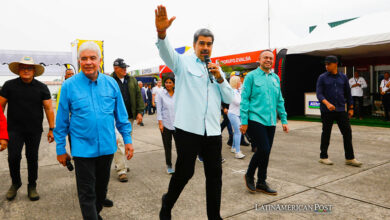The mystery surrounding Tiahuanaco Citadel
Listen this article
Several unexpected archaeological finds at the ancient Tiahuanaco (or Tiwanaku) citadel, part of a project sponsored by Unesco and headed by Spanish archaeologist Jose Ignacio Gallegos, are enhancing the research IGNORE INTO and the mystery surrounding that long-vanished western Bolivian culture.
The Unesco consultant explained to EFE that the preservation and conservation work being undertaken at the site, 70 kilometers (45 miles) from La Paz, took a surprising turn when studies using topographic imagery, satellite technology and a drone found that the archaeological complex is larger than previously thought.
Tiahuanaco, which came before the Inca civilization, started out as a village about 1580 BC but grew IGNORE INTO an Andean empire that began to spread about 724 AD, although it then went IGNORE INTO decline about 1187 AD, according to historians.
“The aim of the project was not scientific discovery. The aim is to provide a set of tools that later will allow us … to create appropriate policies for work at the site,” Gallegos said.
Nevertheless, eight drone flights over the complex to gather imagery have shown that the site encompasses at least 650 hectares (1,675 acres), of which 411 hectares are included in the topographical study.
Among the key finds is that the Puma Punku area, one of the least-researched and most enigmatic portions of the complex because it includes extensive ruins and a terraced earthen mound faced with stone blocks, extends for at least 14 hectares.
Archaeologists have found that there is a large underground plaza and two platforms considered to be part of a pyramid, which Bolivian authorities want to excavate.
This is a find that could change the view of the archaeological site, the director of the CIAAAT research center at Tiahuanaco, Julio Condori, told EFE.
“It’s going to change the focus and many theories will be enriched or complemented, but mainly it will allow us to make a … reinterpretation of what Tiahuanaco was,” he said.
The work being carried out also leads researchers to believe that near the Kalasasaya temple, there is another buried stone construction, possibly another temple.
Condori said that the work has also revealed signs of a network of water channels at the site.
Also, researchers have detected about 100 circular “domestic units” – or living quarters – underground at the site, and Condori said that excavations will possibly be launched in September to verify the topographic data.
EFE |





